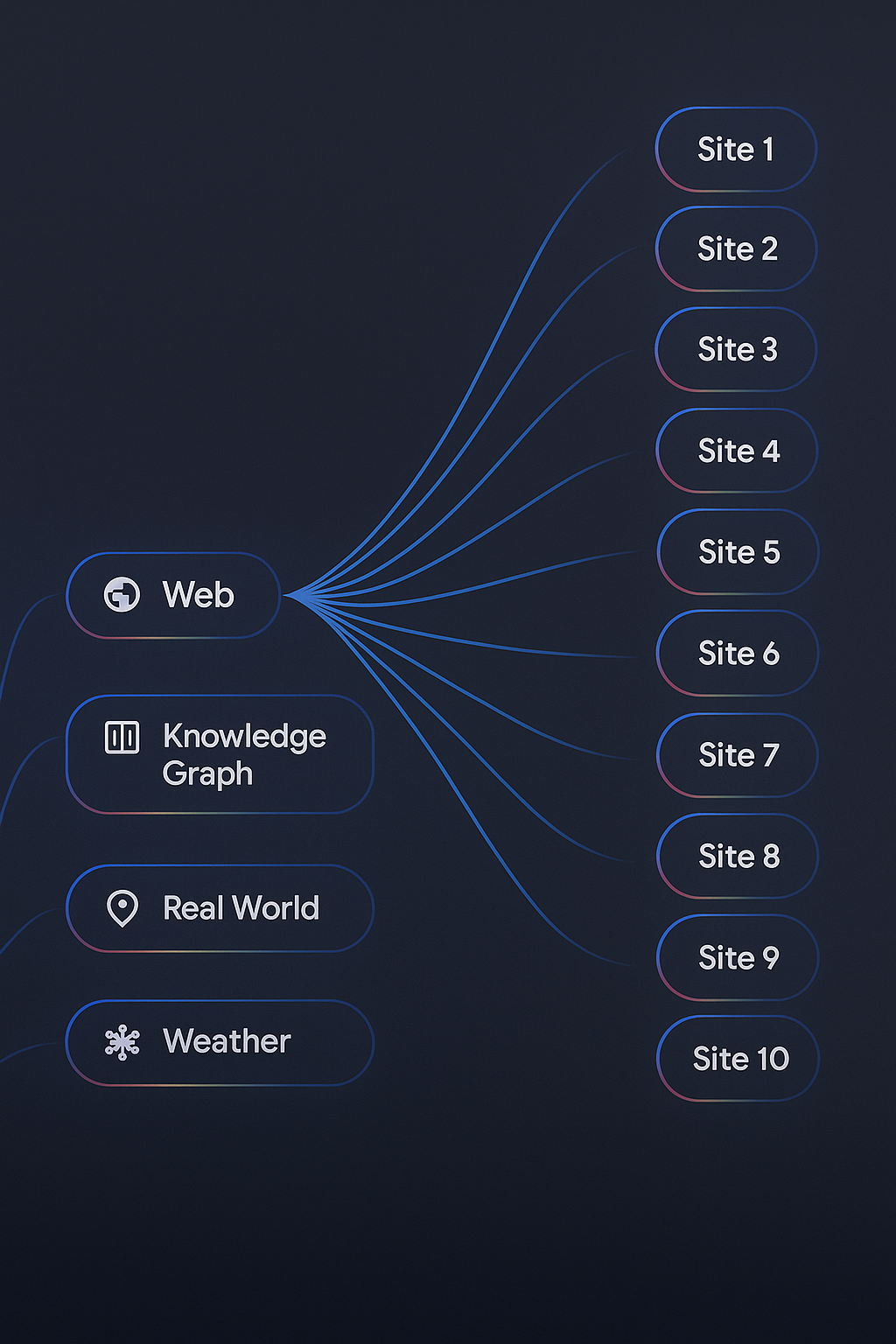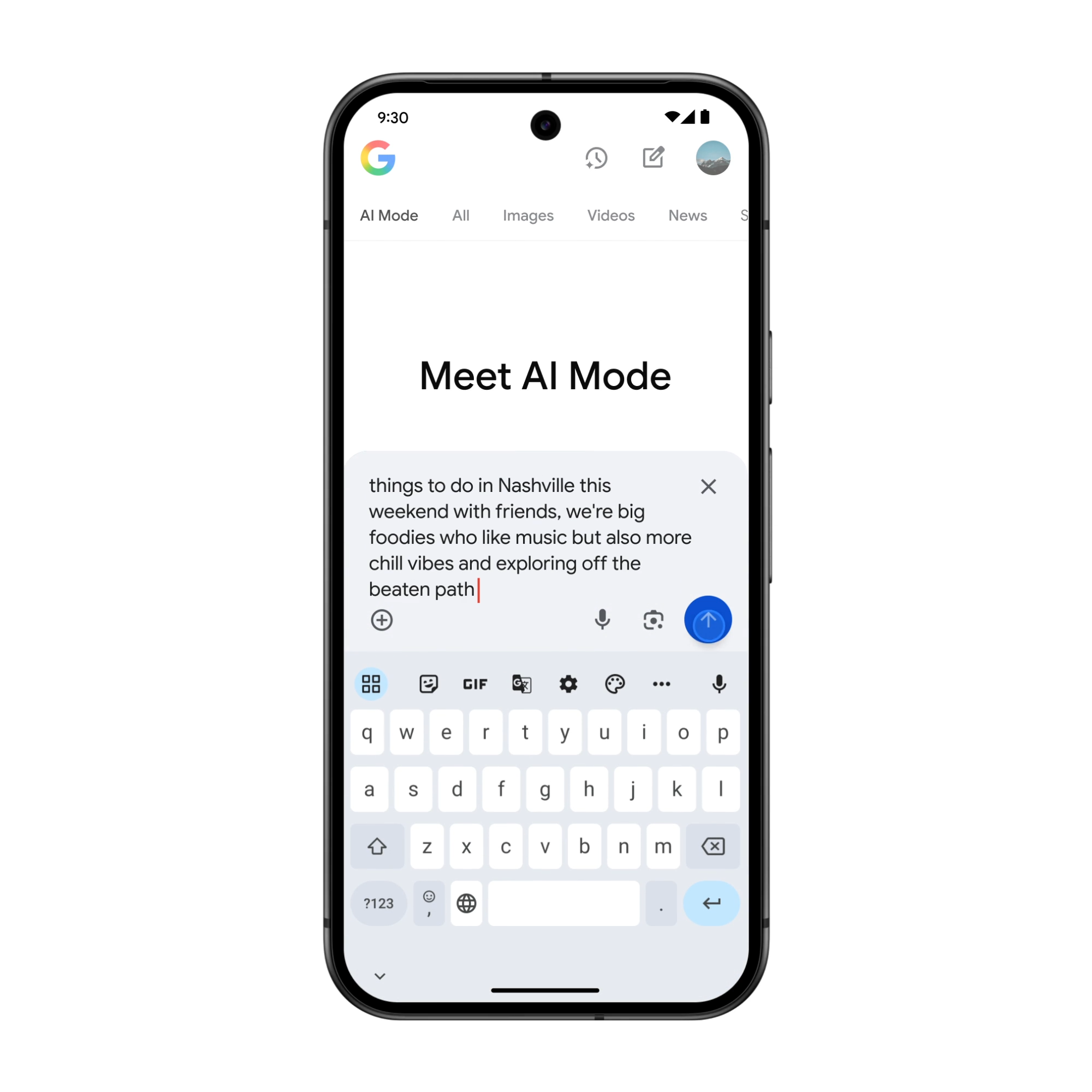Search is undergoing one of its most significant shifts yet
It’s no longer about typing a keyword into a box and scrolling through a list of blue links. Users are asking layered, conversational questions—and expecting fast, specific answers. Not just from websites, but from AI-generated summaries that surface sources directly in the results.
Google’s AI Overviews, powered by passage-level retrieval, mark a clear departure from full-page rankings. Now, Google pulls individual content fragments that best match the search query. The focus has moved from page-level optimization to moment-level relevance within a broader conversation.
And that moment can come from anywhere:
- A sentence buried in a blog
- A line of alt text on an image
- Even a quote pulled from a video transcript
At the same time, that conversation is happening across more surfaces than ever. People are searching through voice, images, and video. This demands a strategy that makes every asset discoverable—and a structure that delivers clear, citable responses AI can easily find.
It’s important to remember that this isn’t just a tweak to the existing algorithm; it’s a redefinition of the search results page (SERP) itself. And it sets the new rules for how we think about SEO in an AI-powered world.

Our POV: AI is an Amplifer, Not an Answer
The response isn’t to overhaul everything. It’s to double down on what works: a strategy rooted in human behavior, backed by technical precision.
That’s how we’ve always delivered for our clients—combining deep customer insight with meticulous execution to drive real visibility and measurable results.
AI doesn’t change that. It strengthens it.
We’ve already heard it before, but it’s worth repeating: AI is not a shortcut. It’s strength lies in scaling what already works.
Consider this: Google has long said that 15% of the searches it sees every day are entirely new. Manually keeping pace with that level of spontaneous, evolving user intent is impossible.
AI helps us bridge that gap by:
- Tracking emerging search trends
- Interpreting intent faster and more accurately
- Optimizing content in real time without losing strategic focus
What we’re seeing on the SERP validates this shift. A 2024 study found that nearly 59% of all Google searches end without a click to the open web. In this environment, brand visibility depends on becoming the authoritative source that AI and users trust. You’re either the answer, or you’re invisible.

How Authority is Won Now: Becoming the Citable Source
So, how do you become the answer?
It starts with being the authority. And that takes more than a blog post. To win today, you need a content ecosystem that spans the full customer journey—from initial awareness to deep consideration and conversion.
That includes support articles, social threads, video snippets, FAQs—each designed to match specific intent and structured so AI can cite it with confidence.
This is where E-E-A-T (Expertise, Experience, Authority, Trust) becomes more than a Google guideline. It serves as the foundation for creating content that people can trust and AI can cite.

AI enables us to:
- Identify the full spectrum of user questions
- Map them to journey stages
- Create high-utility content that is both relevant and retrievable
And authority isn’t confined to your site. To build true visibility, your brand needs to show up in forums, social platforms, publisher sites—anywhere AI draws its sources. Authority now lives across every searchable surface.
Beyond the Click: Measuring the True Influence of SEO
This shift also forces a more honest conversation about what SEO success actually looks like.
A #1 ranking doesn’t matter if it’s buried beneath an AI summary. And impressions are meaningless if they don’t lead to real engagement.
We believe SEO should be measured the same way every other marketing initiative is: by how it drives business impact (qualified engagement, brand lift and sales momentum).
AI helps us take this further by enabling:
- Smarter attribution models
- More strategic A/B testing and content iteration
- Better forecasting of user behavior
It helps us track which content drives qualified engagement – even if that engagement doesn’t come from a direct click. We can now see what content is shaping conversations, not just drawing visits.
When AI is integrated into your SEO measurement model, optimization stops being about traffic volume. It becomes a tool for driving pipeline, conversions, and business growth. That’s the new bar.
The Human Element: Strategy is Still the Differentiator
AI can scale content. It can surface trends. But it can’t define your brand voice. It can’t grasp your audience’s unspoken motivations. And it can’t build a strategy grounded in your business objectives.
That’s still our job as marketers.
Templates do not build trust. Keyword tactics don’t create loyalty. Insight, empathy, and intention do.
That’s why we lead with human strategy and use AI to amplify it. It’s not one or the other. It’s both.
That is how you move beyond simply matching keywords and start winning the conversations that grow your business.
Curious where to start? Let’s chat.
We can help you align your SEO strategy to the way people (and AI) search today—and make sure you’re showing up where it matters.


